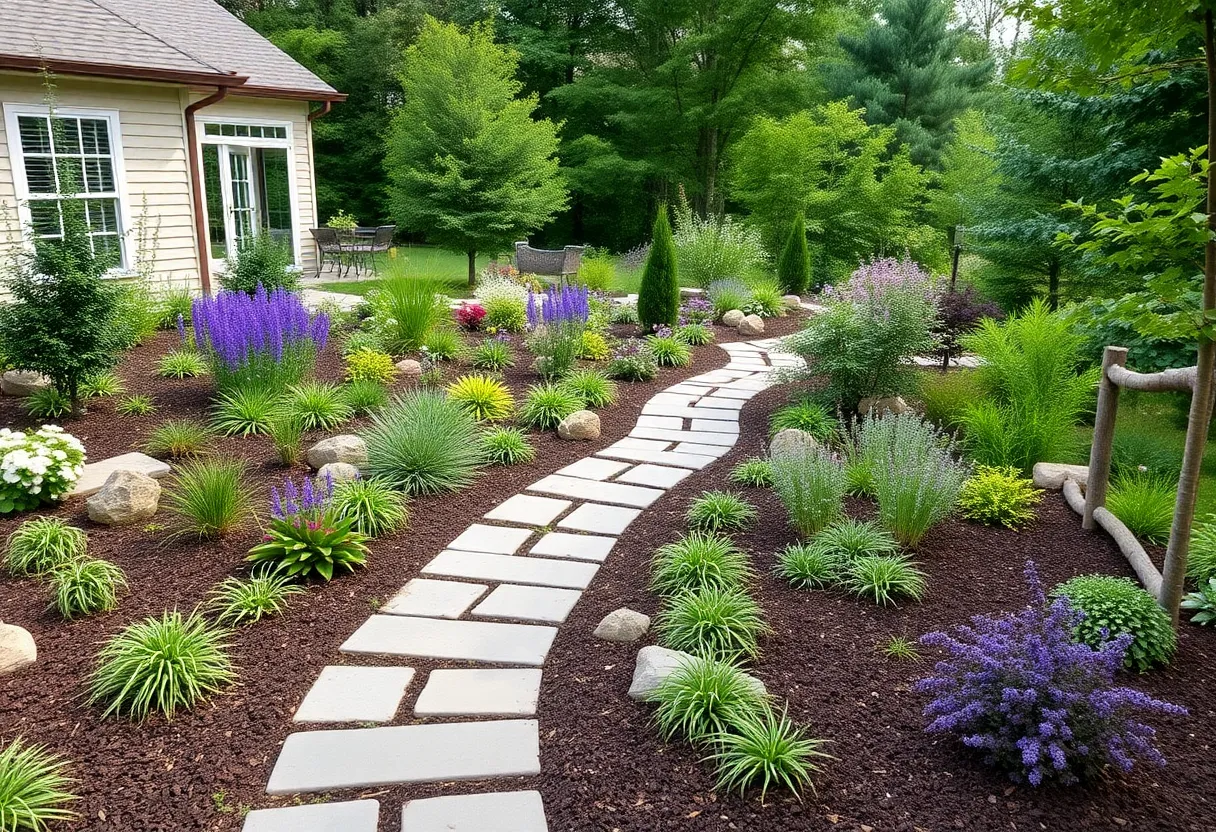What Are the Essential Steps for Planning Your Custom Home’s Landscaping?
Landscaping is a vital component of creating a cohesive, functional, and aesthetically pleasing environment around your custom home. Proper planning ensures your outdoor space complements your lifestyle, enhances property value, and reduces future costs. This comprehensive guide breaks down the essential steps for a successful landscaping plan, providing clarity and actionable insights for homeowners and designers alike.
1. Establishing Your Landscaping Goals and Vision
Define Your Objectives
The first step involves clarifying what you want to achieve through your landscaping. Do you desire a lush garden, a low-maintenance yard, a space for entertaining, or a combination of these? Your goals shape every subsequent decision.
Identify Functional Needs
Consider practical requirements such as pathways for safety, fencing for privacy, areas for children or pets, or outdoor kitchens. Prioritize features based on your lifestyle.
Set Aesthetic Preferences
Visualize the style—modern, traditional, naturalistic, minimalistic—that aligns with your home’s architecture. Collect inspiration images or mood boards to convey your vision clearly.
2. Conducting a Thorough Site Analysis
Assess Topography and Soil Conditions
Analyze the land’s slope, drainage patterns, and soil quality. These factors influence plant choices and construction methods.
Identify Sun and Shade Patterns
Track sunlight exposure throughout the day and seasons. This determines optimal locations for gardens, lawns, and shaded areas.
Examine Microclimates
Recognize areas with unique conditions, such as wind tunnels or frost pockets, affecting plant selection and durability.
Review Existing Vegetation and Structures
Document trees, shrubs, patios, or features that will be retained, removed, or integrated into the new design.
3. Establishing Budget and Timeline Constraints
Determine Your Financial Comfort Zone
Establish a clear budget for design, materials, labor, and ongoing maintenance. Prioritize features accordingly.
Set Realistic Deadlines
Define project phases and completion dates to manage expectations with contractors and designers.
Account for Contingencies
Reserve a portion of your budget for unforeseen issues like soil remediation or drainage problems.
4. Collaborating with Professionals
Engage Landscape Architects or Designers
Work with specialists to develop a comprehensive plan that balances aesthetics with function, environmental impact, and budget.
Select Qualified Contractors
Hire experienced landscapers for installation. Verify credentials and review past projects to ensure quality execution.
Coordinate with Other Construction Phases
Ensure landscaping integrates seamlessly with your home’s construction schedule, including utility connections and structural features.
5. Creating a Detailed Landscape Design Plan
Develop Conceptual Layouts
Illustrate the spatial arrangement of lawns, gardens, pathways, patios, and focal points.
Choose Plantings Carefully
Select native, drought-tolerant, or adaptive species suited to your climate and soil. Consider growth habits, bloom times, and maintenance needs.
Design Hardscape Elements
Plan for driveways, decks, fences, retaining walls, lighting, and water features to add structure and functionality.
Incorporate Sustainability Measures
Include rain gardens, permeable pavements, and native landscaping to promote eco-friendly practices.
6. Selecting Materials and Plants
Prioritize Durability and Maintenance
Choose materials that withstand your local climate and require minimal upkeep. For example, using concrete pavers or composite decking instead of wood that rots easily.
Incorporate Color, Texture, and Form
Create visual interest with a diverse palette of plant textures, colors, and shapes. Use evergreen, deciduous, flowering, and foliage plants for year-round appeal.
Plan for Seasonal Variability
Select plants that bloom at different times, ensuring the landscape remains vibrant throughout the year.
7. Planning for Irrigation, Drainage, and Soil Preparation
Irrigation Systems
Design efficient watering solutions such as drip irrigation, sprinklers, or smart controllers. Proper installation ensures sustainability and plant health.
Drainage Solutions
Address drainage issues identified during site analysis through grading, French drains, or moisture barriers to prevent flooding and erosion.
Soil Enhancement
Amend poor soil with compost, organic matter, or other inputs to improve fertility, drainage, and stability for planting success.
8. Environmental and Regulatory Considerations
Adhere to Local Regulations
Obtain necessary permits for landscape modifications, especially for water features, retaining walls, or significant grading.
Preserve Natural Resources
Implement eco-friendly practices like native planting, composting, and water conservation to minimize environmental impact.
Protect Existing Vegetation
Carefully plan construction to avoid damaging mature trees or sensitive habitats, ensuring a sustainable landscape.
9. Implementation and Construction Oversight
Phased Construction
Organize the project into manageable phases, prioritizing critical elements like grading and drainage before planting.
Supervision and Quality Control
Regularly monitor work to ensure adherence to design specifications. Address issues promptly to avoid costly revisions.
Minimize Disruption
Plan construction activities to reduce disturbance to adjacent structures and neighbors.
10. Maintenance Planning for Longevity and Beauty
Develop a Maintenance Schedule
Outline routine tasks such as watering, pruning, fertilizing, and pest control.
Adjust Landscaping Over Time
Be prepared to replace or prune plants as they mature or if they do not perform as expected.
Invest in Preventative Care
Implement mulching, soil testing, and pest management to prolong plant health and reduce the need for costly interventions.
Conclusion: The Path to a Successful Landscaping Investment
Proper planning is paramount for transforming your outdoor space into a harmonious extension of your custom home. By systematically establishing goals, analyzing your site, collaborating with professionals, designing thoughtfully, and maintaining rigorously, you ensure a landscape that not only beautifies your property but also functions sustainably and efficiently.
Remember: The most effective landscaping plans are those that are tailored to your specific site, budget, and lifestyle, emphasizing long-term value and adaptability. Careful planning today leads to a resilient, vibrant outdoor environment for years to come.
Author: STAFF HERE INDIANAPOLIS WRITER
The INDIANAPOLIS STAFF WRITER represents the experienced team at HEREIndianapolis.com, your go-to source for actionable local news and information in Indianapolis, Marion County, and beyond. Specializing in "news you can use," we cover essential topics like product reviews for personal and business needs, local business directories, politics, real estate trends, neighborhood insights, and state news affecting the area—with deep expertise drawn from years of dedicated reporting and strong community input, including local press releases and business updates. We deliver top reporting on high-value events such as the Indianapolis 500, Indy Jazz Fest, and the Indiana State Fair. Our coverage extends to key organizations like the Indy Chamber and Visit Indy, plus leading businesses in motorsports and healthcare that power the local economy such as Indianapolis Motor Speedway and IU Health. As part of the broader HERE network, we provide comprehensive, credible insights into Indiana's dynamic landscape.





